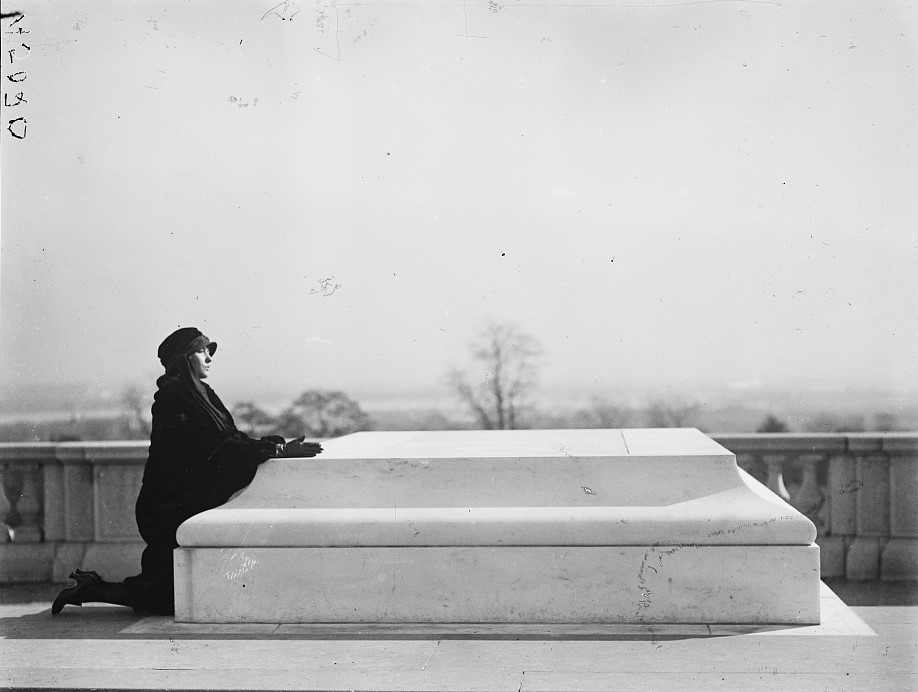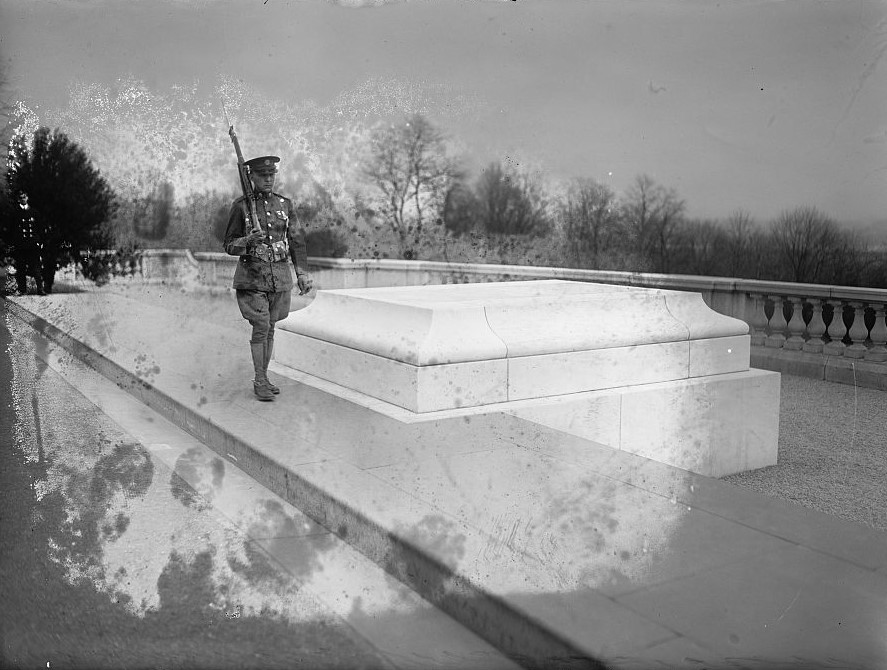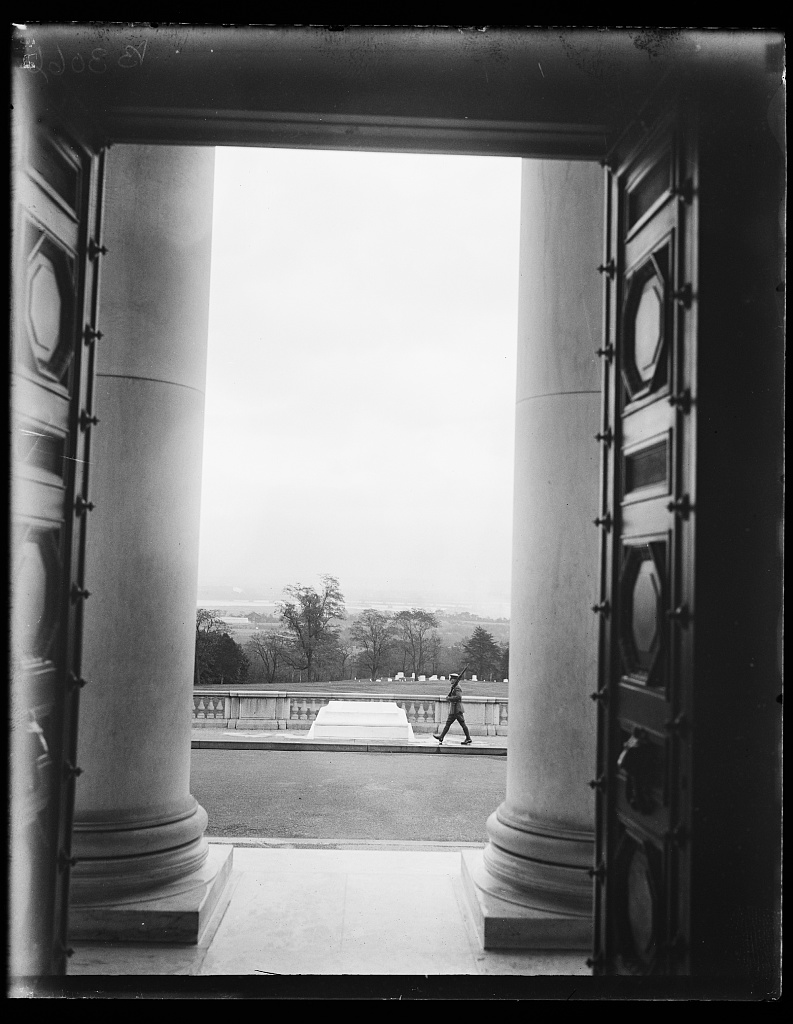Tomb of the Unknown Soldier Centennial Commemoration Lecture Series
Silence and Respect: A History of the Tomb Guards
Written and presented by Tim Frank, Historian, Arlington National Cemetery
Each year, millions of visitors experience the changing of the guard ceremony at the Tomb of the Unknown Soldier conducted by the Tomb Guards of the Army’s 3d U.S. Infantry Regiment (The Old Guard). However, the Old Guard did not always watch over the Tomb. In fact, during its first four years, the Tomb was not guarded at all. In this episode, Arlington National Cemetery Historian Tim Frank provides a short history of the evolution of the guards, from civilian watchmen to the specialized soldiers who serve at the Tomb today.
Listen Here: Silence and Respect: A History of the Tomb Guards
Tim Frank serves as a historian at Arlington National Cemetery. He studied history in college and graduate school and he has worked at Arlington National Cemetery since 2015. Prior to that, he was a historian at the Naval History and Heritage Command at the Washington Navy Yard.
A woman kneels at the Tomb of the Unknown Soldier in 1922, when visitors could still directly approach the Tomb. (Library of Congress)

Prince Andrew of Greece stand with his camera directly in front of the Tomb of the Unknown Soldier in March 1923. Note how close he could get to the Tomb. (Library of Congress)

This March 26, 1926, photo purports to show the first permanent guard at the Tomb of the Unknown Soldier. (Library of Congress)

This photo of the Tomb of the Unknown Soldier taken from inside the Memorial Amphitheater Display Room on November 5, 1928, shows a guard protecting the site. (Library of Congress)

A guard at the Tomb of the Unknown Soldier in 1931. (Library of Congress)

A crowd gathers near the Tomb of the Unknown Soldier after the Memorial Day services in May 1943. Note how close people could walk to the sarcophagus, seen in the photo’s far right edge. Photo by Esther Bubley. (Library of Congress)

